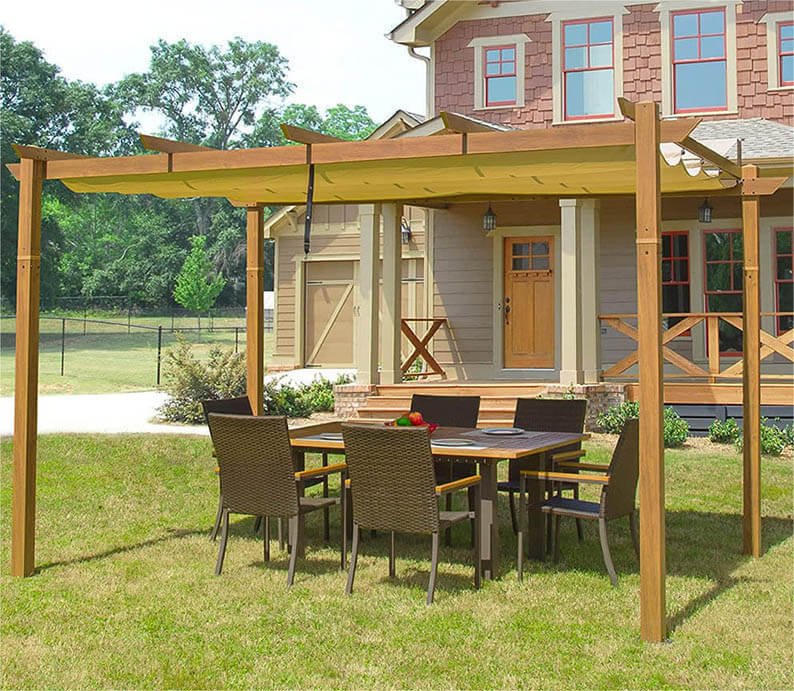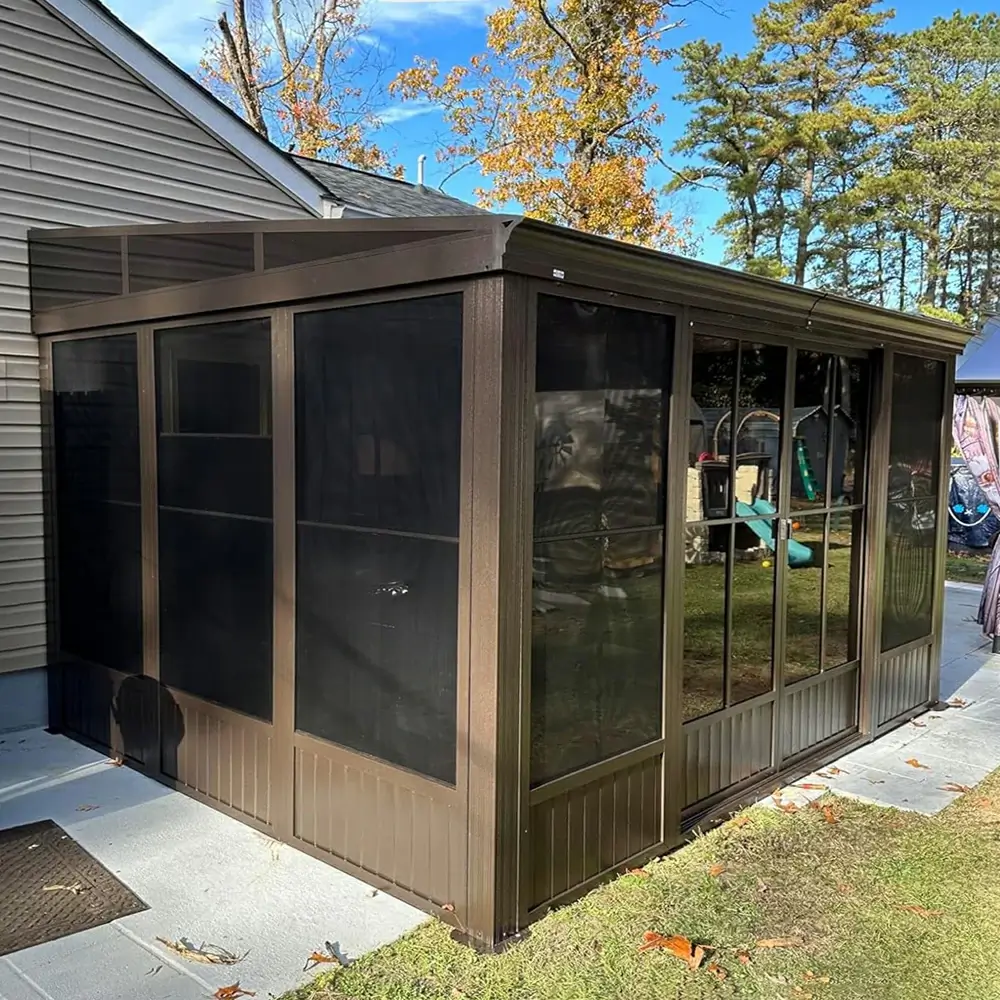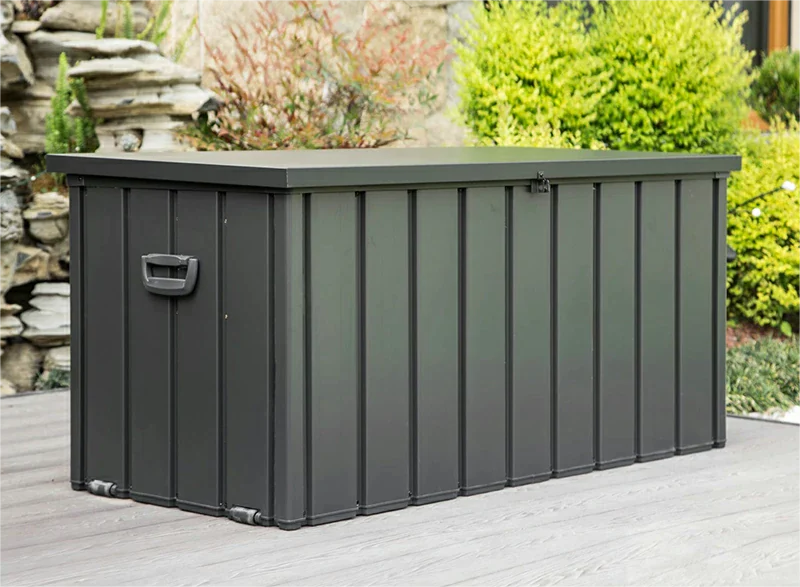A pergola manifests as an al fresco edifice, conceived through the orchestration of vertical stanchions or columns that buttress girders or a robust, open trellis. Some annex to the facade of a domicile or carport, whilst others stand in solitary grace. These external adornments are typically wrought from elements defiant to the vicissitudes of weather, such as timber, metal, or stone.
Pergolas serve to forge shaded promenades, demarcated convivial arenas, and trellises for the ascent of flora. Albeit they intercept a portion of the direct solar embrace, their open canopy design permits a dalliance of light to filter through. Verily, the pergola's genus is manifold, yet the initial curiosity of many is to discern the distinction between a pergola and a gazebo.
What is a Pergola vs. a Gazebo?
A pergola, an elevated garden structure supported by columns, boasts an open lattice for the roof, permitting the zephyrs to meander through. Such edifices lend a veil of seclusion to expanses otherwise devoid of cover, a boon for domiciles encircled by towering edifices, such as apartment complexes.
In divergence, gazebos stand as solitary edifices, often crowned with a sealed canopy. They are typically wrought from a mélange of stone, wood, and metal. Gazebos find their ideal locale in capacious gardens, offering an oasis of shade and dryness for repose. A number of these structures are outfitted with integral seating and surfaces for convenience.
Pergolas, with their unadorned design, can be adjoined to a veranda or another permanent structure. Yet, their role is primarily to furnish a modicum of shelter for an outdoor area, rather than to encase it fully. Gazebos, on the other hand, delineate a space distinctly, almost forging a secluded nook or a sanctum within a garden's embrace.
Types of Pergolas

Pergolas can be built using a range of materials such as cedar, teak, aluminum, or vinyl. The choice of pergola design depends on the space you have available, your budget, and your taste in decor.
For those looking to save money and enjoy a hands-on project, opting for a pergola kit can be a convenient and satisfying DIY route. However, the first step is to determine the best pergola type for your residence.
Wooden Pergolas
A wooden pergola offers facile customization to accommodate individual preferences. Wood, both economical and pliable, lends itself well to staining. Albeit hues may transition with time, these wooden structures are effortlessly rejuvenated with a fresh coat of paint or a new finish.
Vinyl Pergolas
Pergolas made from vinyl, while more expensive than those constructed from wood, offer unmatched durability against pests, mold, and the damaging effects of moisture.
This makes them a long-lasting option, resistant to the harsh conditions outdoors.
However, a significant limitation is their lack of color flexibility. Once you choose a color, you're permanently committed to it, which can be a drawback if your taste in aesthetics changes over time.
Aluminum Pergolas
This sleek metal pergola epitomizes the essence of modern, minimalist aesthetics, serving as the perfect solution for crafting state-of-the-art outdoor havens. These elegantly designed structures, which blend affordability with a touch of luxury, are revolutionizing the idea of avant-garde car shelters.
Their innovative aluminum designs are crowned with versatile canopies, making them ideal for elevating poolside settings or establishing serene areas for relaxation in the open air.
Domi's outdoor pergola, crafted from high-quality aluminum, exemplifies durability and longevity, ensuring it withstands the test of time and weather. The pergola features a retractable cover that shields against harsh sun rays, making it versatile for any occasion. It provides a comfortable and cool ambiance, perfect for reading, relaxing, or hosting events.
Pros of a Pergola

A pergola serves as a stunning feature in any outdoor space, whether it's set over a patio, nestled within a courtyard, or enhancing a garden, turning these places into inviting areas for enjoying the outdoors for longer periods.
These structures aren't meant to fully shield you from the elements but are instead crafted to define and beautify spaces near pools, relaxation areas, or garden focal points with their network of beams overhead, offering a framework for hanging plants, lights, or even swing seats.
For those who love spending time outdoors but wish to avoid the harsh midday sun, pergolas offer a perfect refuge. They also provide privacy from the proximity of neighboring high-rise buildings. Many owners increase this sense of privacy by hanging outdoor curtains, further enhancing its secluded feel.
With their stylish appearance and cost-effectiveness, pergolas are a compelling choice for anyone looking to create a peaceful outdoor sanctuary.
Cons of a Pergola
Pergolas, cherished for their aesthetic contribution to gardens and courtyards, demand regular maintenance. Their design, devoid of barriers on the flanks and zenith, akin to a veranda, becomes a haven for insects, particulates, and grime. One must always have a whisk broom and suction apparatus at the ready to ensure the terrain beneath the arbor remains pristine.





Leave a comment
This site is protected by hCaptcha and the hCaptcha Privacy Policy and Terms of Service apply.